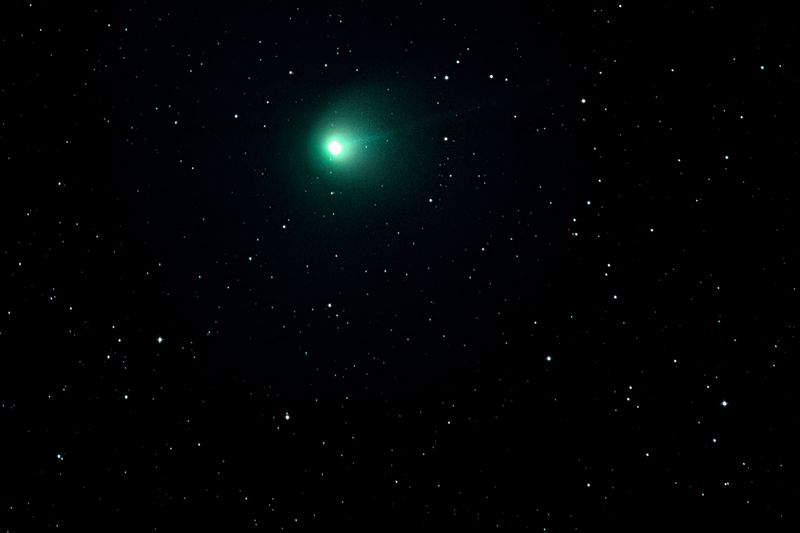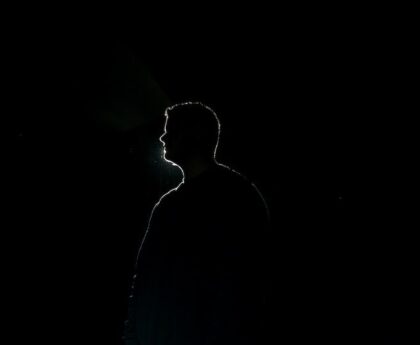Spotting Comet Nishimura in the Skies: A Rare Spectacle for Canadians
By | September 12, 2023
Introduction
Comet Nishimura, also known as C/2023 P1, is set to make its closest approach to the sun, providing a remarkable opportunity for sky-watchers in the northern hemisphere to catch a glimpse of its green tail. Discovered just a month ago by amateur astronomer Hideo Nishimura, this comet’s rarity lies not only in its recent discovery but also in its 437-year orbit around the sun. Canadians, in particular, have the chance to witness this celestial marvel before it disappears from sight.
When and Where to Look
Comet Nishimura will be visible in the mornings before sunrise until September 17th, when it reaches its closest point to the sun. Observers are advised to look towards the northeast about an hour before sunrise, in the constellation Leo. Using stargazing apps can help pinpoint the exact location of the comet from your current position. As the week progresses, however, spotting the comet may become more difficult due to its proximity to the sun. Should Comet Nishimura survive its close encounter with our star, it may become visible again from the southern hemisphere.
Spotting the Comet
If attempting to locate the comet with the naked eye, it may appear as a fuzzy blob. For a better view, it is recommended to use binoculars which may reveal the shape of the comet’s tail. While there are predictions that Comet Nishimura may achieve naked-eye visibility, it is advisable to use binoculars for a clearer view. However, as Don Pollacco, an astronomer at the University of Warwick in the UK, wisely points out, “With comets, you just never know.”
Astronomical Rarity
Comet Nishimura‘s recent discovery and subsequent visibility in our skies make it an extraordinary event. While comets visible to the naked eye are not necessarily rare, the short period between discovery and visibility is unusual. Another rare feature of Comet Nishimura is its 437-year orbit around the sun, guaranteeing that it will not return until the 25th century. This makes experiencing the spectacle of Comet Nishimura even more significant for Canadians and sky enthusiasts worldwide.
The Green Fiery Beauty
One of the key characteristics of Comet Nishimura is its vibrant green appearance. This color is attributed to the presence of diatomic carbon, a rare carbon gas, within the coma, the gas envelope surrounding the comet’s nucleus. The interaction between the sun’s radiant energy and the diatomic carbon results in the dazzling green glow that captivates observers.
Understanding Comets
Comets are composed of ice and rock and originate from the Oort Cloud, a region of the outer solar system. When these icy bodies approach the sun, the heat causes the ice to convert into gas and stream away from the nucleus, creating the iconic tail that we associate with comets. The visibility of this process from Earth is often unpredictable but never fails to fascinate astronomers and sky-watchers alike.
Conclusion: Seize the Celestial Opportunity
Given the rarity of Comet Nishimura and its forthcoming disappearance for centuries to come, it is highly recommended that Canadians and individuals in the northern hemisphere make the most of this extraordinary opportunity. Wake up early, step outside, and gaze upon the magnificence of Comet Nishimura‘s green tail as it embarks on its journey around the sun. Remember to utilize stargazing apps, binoculars, or even the naked eye to fully embrace the marvels of the universe unfolding above us.
Sources:
- Abigail Beall. “How to spot green comet Nishimura in the skies this week.” September 12, 2023.

<< photo by DAMIANUM CASTRUM >>
The image is for illustrative purposes only and does not depict the actual situation.




